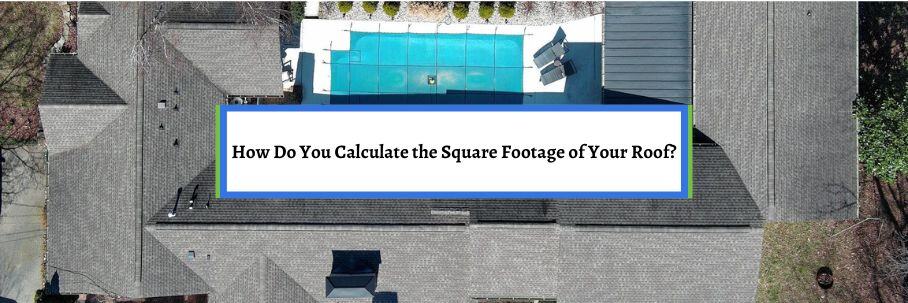How Do You Calculate the Square Footage of Your Roof?

Is it time for a roof replacement? Are you trying to determine the budget you’ll need for a new roof?
Well, to understand the size of your roof investment, you first need to know the size of your roof. You may think you can use your home’s square footage, but this will not give you an accurate square footage of the roof area.
For over 30 years, Bill Ragan Roofing has taken pride in educating homeowners on the complexities and confusion of their upcoming roofing project. Because of this, I’ll give you an easy way to get a rough measurement of your roof’s square footage.
This article answers the following questions:
- How do you calculate the square footage of your roof?
- Why can’t you use your home’s square footage to estimate your new roof’s cost?
How do you calculate the square footage of your roof?
There’s no way to calculate your roof’s square footage without putting some work in. There are multiple formulas and ways to do this, but they should all lead to the same general number.
However, there’s no reason to overcomplicate it when determining the budget you’ll need for a replacement. After all, you’ll get a 100% accurate measurement when estimating your new roof.
So, let’s look at a simple way to calculate your roof’s square footage.
Figure out your home’s footprint
First, you need to determine your home’s footprint by multiplying the length and width of your home. To do this, step off the dimensions of your roof by counting the steps you take when walking the length and width of your home.
| Length x width = Home Footprint |
A person of average height has a stride somewhere around 2 to 3 feet, so let’s use 3 feet as our baseline. After counting the strides, multiply the number by 3 to get the length and width of your home.

Finally, multiply the length and width to get your home’s footprint. Your calculations will be off, but measuring this way can give you a basic idea of your home’s footprint.
Add the pitch and complexity multiplier
Next, you need to factor in your roof’s steepness and complexity to get the number you’ll multiply the footprint by. This is where it gets complicated because most homeowners don’t know their roof’s pitch, and complexity varies from roof to roof.
So, I simplified it with ranges. Once you determine which one to add from the table below, you’re ready to put it all together.
| Pitch and Complexity | Multiplier |
| Up and over, walkable roof | Footprint x 1.3 = Roof’s Square Footage |
| Roof with some complexity and a 5/12 - 8/12 roof pitch | Footprint x 1.4 = Roof’s Square Footage |
| Complex and steep roof (8/12 or steeper) | Footprint x 1.6 = Roof’s Square Footage |
Calculate the square footage of your roof
Now that you added in the multiplier, let’s calculate the square footage of your roof. To get a rough estimate of your roof’s square footage, use this simple two-step equation:
| (length of home) x (width of home) = (footprint of your home) |
| (footprint of your home) x (slope and complexity multiplier) = (square feet of roof area) |
Now, we can put it all together using our example from before. Let’s say you’re getting a new architectural asphalt shingle roof that costs $5.86 per square foot.

Obviously, this doesn’t guarantee 100% accuracy. However, it gives you a starting point so you can use your roof’s square footage to get a more realistic idea of the budget you’ll need.
Why can’t you estimate your new roof’s cost using your home's square footage?
After learning how to calculate your roof’s square footage, you may think it’s too much work and a hassle. This makes it tempting to use your home’s square footage instead to make it easier.
However, your home’s square footage does not equal your roof’s square footage. Let’s dig into the reasons why.
Roof Pitch
Roof pitch (also called roof slope) is your roof's steepness (angle). The angle of a roof or roof facet impacts the total square footage, which is why we factor in the multipliers.
It impacts square footage because the steeper the roof is, the more the incline increases the total roof surface area. Because of this, a roof with a steep pitch will have significantly more square footage than a flat roof, even if the homes have the same square footage.
Roof Complexity
Roof complexity is simply how your roof is cut up, such as multiple facets, different pitches, hips, valleys, gables, dormers, and the number of stories off the ground. Just like roof pitch, the complexity of your roof increases the square footage.
This is simply because architectural features or multiple facets at different angles are not included in your home's square footage.
Overhang at the eaves
Eaves are the lower edges of a roof, also considered the gutter line. This creates an overhang that goes beyond your home's exterior walls, increasing a roof’s square footage.
The overhang will not be accounted for in your home’s square footage. However, it won’t increase your roof’s square footage as much as the other reasons listed here.
Multiple stories
A roof’s square footage will only increase when the total roof surface area increases. Obviously, a roof only covers the upper levels if you have a multi-story home.
It simply doesn’t make sense to use your home’s total square footage when the roof only covers the uppermost level. Even if you have a split-level home, the total roof surface area would be a combination of both roofs on the first and second levels.
Attic spaces and other unfinished spaces
Attics, garages, and other unfinished spaces do not count towards your home’s square footage. However, if there is no other level above, they still need to be roofed.
Attic spaces can also increase a roof’s height and angle, which would increase the overall square footage. If these spaces have a roof directly over them, using your home’s square footage won’t do you any good.
How much will your new roof cost based on your roof’s square footage?
Now you know how to calculate your roof’s square footage. You also learned why you can’t use your home’s square footage when estimating your new roof’s cost.
Remember, you won’t get a 100% accurate measurement of your roof’s square footage until after an inspection from a roofer. Luckily, the formulas at least give you a rough measurement to use while researching how much a new roof costs.
But where do you find costs per square foot for the different roofing materials? More importantly, how do you find accurate pricing?
This is harder than it should be because the industry doesn’t like to talk about it. Even when you find information, prices are misleading because they only include the material without all the other cost factors to give you a complete answer.
I want you to fully understand and prepare for the investment getting a new roof requires. That’s why I wrote another article breaking down the average cost of a new roof in 2024, costs per square foot of the most popular roofing materials, and more.
Check out How Much a New Roof Costs in 2024 to put what you learned in this article to work and learn the budget you’ll need for your roof replacement.


